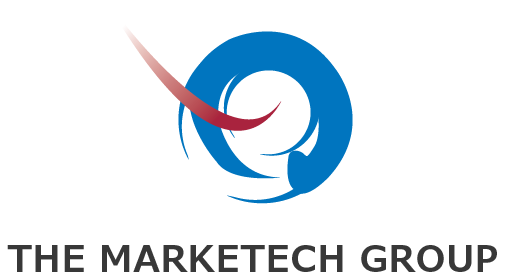Written by: The Marketech Group

What is Market Segmentation in Healthcare?
Market segmentation in healthcare is the process of dividing a broad audience into distinct groups based on shared characteristics, enabling organizations to tailor their strategies for more effective engagement. These segments can include patients, healthcare providers, payers, and other key stakeholders, each with unique needs, behaviors, and decision-making criteria.
Segmentation helps identify and prioritize target audiences, allowing healthcare marketers to deliver personalized messages, services, or solutions that resonate with specific groups. This approach improves resource allocation, enhances patient-provider communication, and drives better outcomes across the care continuum. By addressing the diverse preferences of stakeholders, healthcare organizations can foster stronger connections and boost the overall effectiveness of their marketing initiatives.
When executed with precision, market segmentation becomes a cornerstone of impactful healthcare marketing strategies, driving both engagement and value.
Key Benefits of Effective Healthcare Market Segmentation
Effective healthcare market segmentation delivers significant advantages for organizations aiming to connect with diverse audiences. Targeting specific groups with tailored strategies helps healthcare marketers maximize engagement, optimize resource allocation, and achieve measurable outcomes. Key benefits include:
- Improved Patient Engagement: Personalized messaging resonates more deeply, building trust and loyalty.
- Enhanced Marketing ROI: Focused campaigns allocate resources efficiently, leading to greater impact.
- Stronger Provider Relationships: Custom solutions address unique provider needs, fostering collaboration and satisfaction.
- Informed Product Development: Insights from segmentation shape innovations aligned with stakeholder preferences.
- Better Health Outcomes: Tailored communication and interventions strengthen patient adherence and results.
Effective segmentation transforms marketing efforts into a powerful driver of growth, improving connections and outcomes across the healthcare ecosystem.
Types of Market Segmentation in Healthcare
Healthcare market segmentation can be categorized into three primary areas: patient segmentation, provider segmentation, and segmentation of other stakeholders. Each focuses on distinct audiences, offering insights to drive targeted strategies and improve engagement.
Patient Segmentation
Patient segmentation involves grouping individuals based on demographics, behaviors, or health needs, allowing for more personalized care and communication.
Effective Segments for Patients/Consumers
Effective patient segments might include groups based on age, such as seniors managing chronic conditions or millennials seeking preventive care. Behavioral factors, like treatment adherence, also define actionable segments.
Psychographic data, including attitudes toward health and wellness, can further refine outreach efforts.
Healthcare Provider Segmentation
Healthcare provider segmentation focuses on identifying groups of professionals with similar needs, preferences, or practice characteristics.
Effective Market Segments for Healthcare Professionals
Providers can be segmented by specialty, practice size, or technology adoption levels. For example, small practices may require distinct marketing strategies compared to large hospital systems. Geographic location and regulatory environments also influence how providers engage with services or technologies.
Segmenting Other Stakeholders
Beyond patients and providers, stakeholders such as payers, purchasing staff, procurement, hospital administration, and suppliers represent critical segments in healthcare. Understanding these unique stakeholder dynamics ensures well-rounded, targeted healthcare marketing strategies.
Key Steps to Effective Market Segmentation in Healthcare
Developing impactful healthcare market segmentation
requires a structured, data-driven approach. The following steps outline a path to ensure precision and effectiveness, combining strategic insights with advanced methodologies.

Step 1: Conducting Comprehensive Market Research
Effective segmentation begins with in-depth market research to gather critical data. This includes demographic, firmographics, and behavioral information from patients, providers, and other stakeholders. A robust research foundation ensures meaningful segments emerge.
Step 2: Defining Clear Segment Criteria
Once data is collected, establishing clear segmentation criteria is essential. Parameters may include age, income, health status, or geographic location. Statistical techniques like factor analysis, principal component analysis (PCA), or unsupervised random forest can help identify the most relevant criteria. Defining these parameters ensures segments are both practical and aligned with organizational goals.
Step 3: Analyzing and Validating Segments
Sophisticated tools such as k-means clustering and other machine learning algorithms are applied to uncover patterns within the data. This process groups individuals based on shared characteristics, allowing for a deeper understanding of distinct customer segments.
Step 4: Implementing and Monitoring Segmentation Strategy
Once segments are identified,
tools like PROfiler can be used to integrate this data into sales and marketing workflows. PROfiler empowers future sales teams to categorize leads into defined segments, ensuring targeted messaging and efficient resource allocation. By leveraging segmentation insights within PROfiler, organizations can enhance engagement and streamline their sales processes.
Case Studies: Successful Market Segmentation in Healthcare
The MarkeTech Group recently supported the market entry of a telemonitoring solution in Europe, delivering actionable insights to ensure a successful launch. The project focused on understanding patient discharge practices and pain management needs.
Through focus groups with healthcare professionals across the UK, Germany, France, Spain, and Italy, we gathered essential insights into market needs and stakeholder preferences. This targeted research enabled the identification of key patient segments and influential stakeholders critical for market penetration.
Our findings empowered the client to develop a precise marketing and sales strategy, focusing on the most receptive audiences. By positioning the telemonitoring solution effectively, the client achieved greater product adoption, streamlined resource allocation, and increased ROI.
This success story demonstrates how strategic market segmentation can optimize sales efforts, align solutions with market needs, and drive impactful outcomes in the competitive healthcare industry.
Challenges and Considerations in Healthcare Market Segmentation
While healthcare market segmentation offers immense benefits, it comes with unique challenges and considerations. The complexity of healthcare audiences—spanning patients, providers, payers, and policymakers—requires careful segmentation to avoid oversimplification.
Data accuracy and availability often pose hurdles. Incomplete or outdated data can lead to inaccurate segments, undermining marketing efforts. Regulatory requirements, such as HIPAA and GDPR, add layers of complexity to data collection and usage.
Another consideration is balancing specificity and scalability. Highly targeted segments may yield impactful results but can limit market size or campaign reach. Additionally, market dynamics, such as evolving patient needs or emerging technologies, necessitate continuous monitoring and adjustment of segments.
By addressing these challenges with robust research, advanced methodologies, and strategic oversight, organizations can harness the full potential of healthcare market segmentation.
The Role of The MarkeTech Group in Healthcare Market Segmentation
The MarkeTech Group delivers data-driven insights that empower healthcare organizations to execute precise, impactful market segmentation strategies. With expertise in medical imaging, diagnostics, informatics, AI, and life sciences, our team blends deep industry knowledge with advanced methodologies to solve the complex challenges of healthcare marketing.
Our proprietary PROfiler tool extends segmentation insights beyond research, enabling sales teams to efficiently categorize and prioritize leads within predefined market segments. This seamless integration ensures long-term success by maximizing the value of your segmentation strategy and aligning efforts with actionable insights.
From identifying key stakeholder groups to uncovering actionable patient preferences, we help clients craft targeted strategies that drive engagement, optimize resources, and support successful product launches. Our proven approach ensures segmentation aligns with organizational objectives and adapts to shifting market dynamics.
Partner with The MarkeTech Group to de-risk your marketing decisions and enhance your competitive advantage.
Request a proposal today to discover how our tailored solutions can drive your success.
Contact Us
USA
The MarkeTech Group, LLC
502 Mace Blvd, Suite 15
Davis, CA 95618
Tel: (+1) 530-792-8400
Fax: (+1) 530-792-8447
France
The MarkeTech Group, SARL
3, Rue Emile Péhant
44 000 Nantes - FRANCE
Tel: +33 (0)2 72 01 00 80
Fax: +33 (0)2 40 48 29 40
Our site links
Website imagined and executed by RivalMind.




